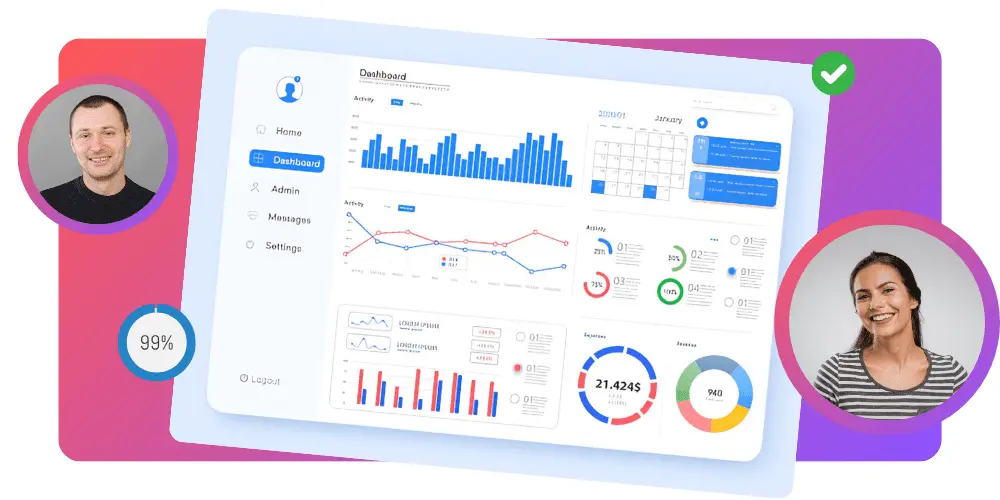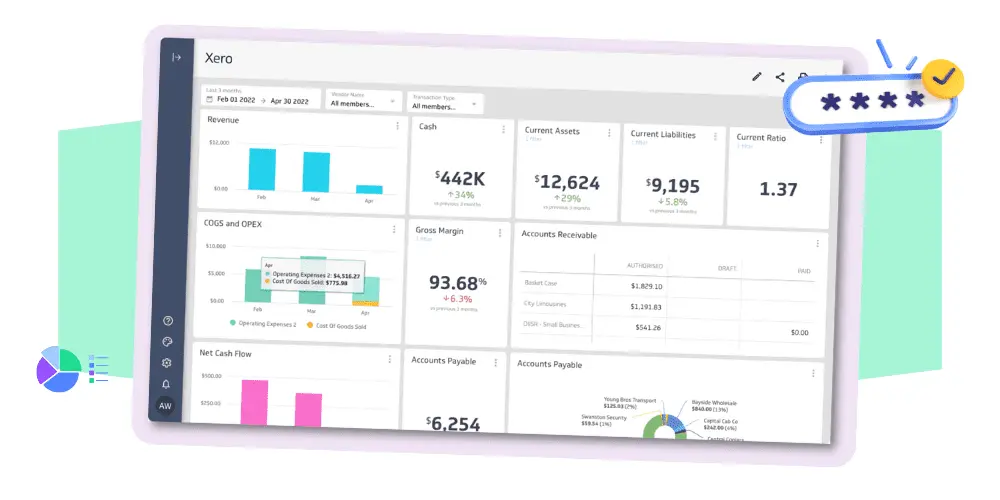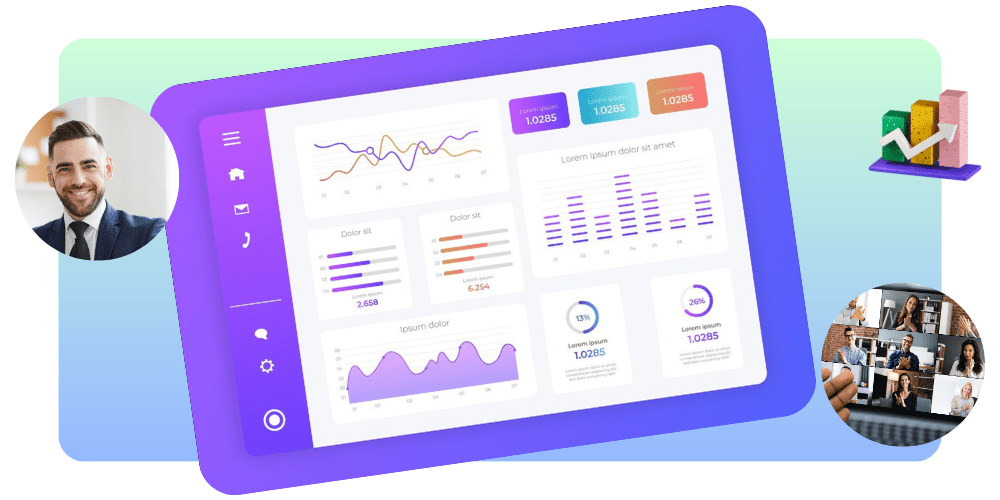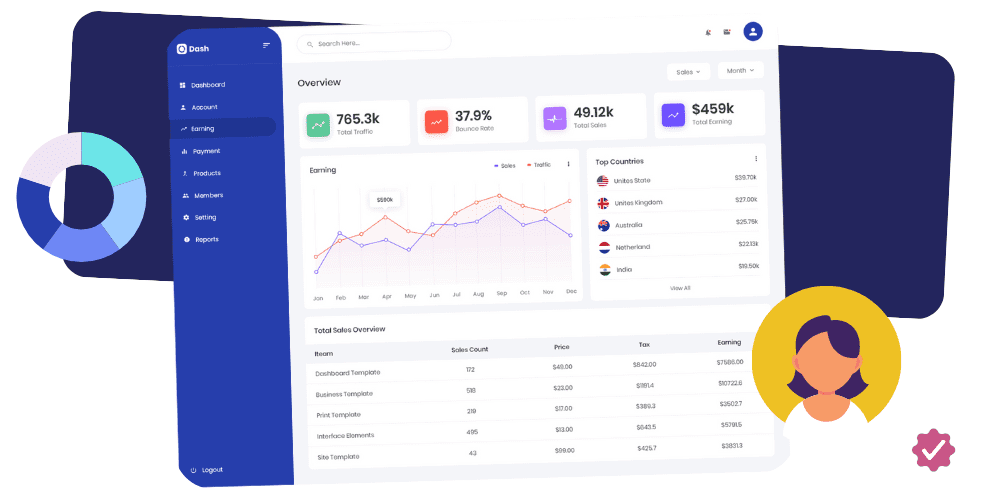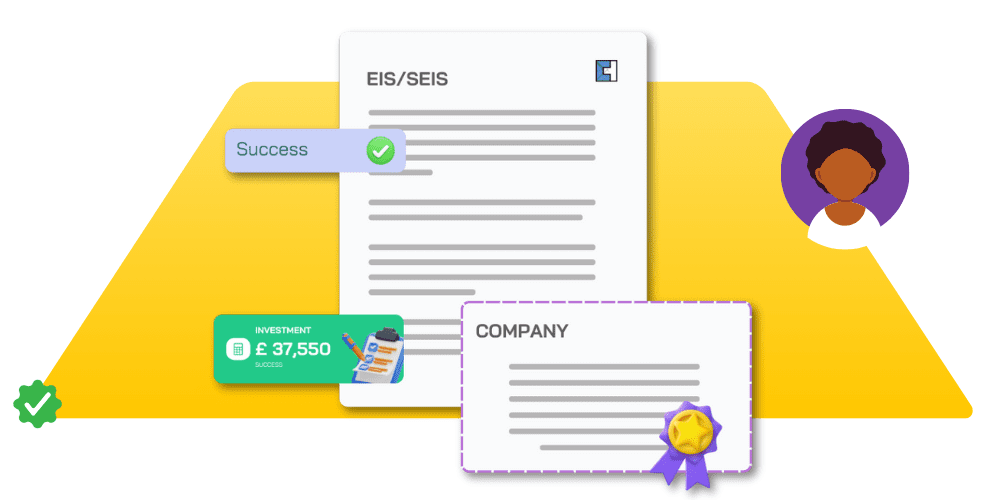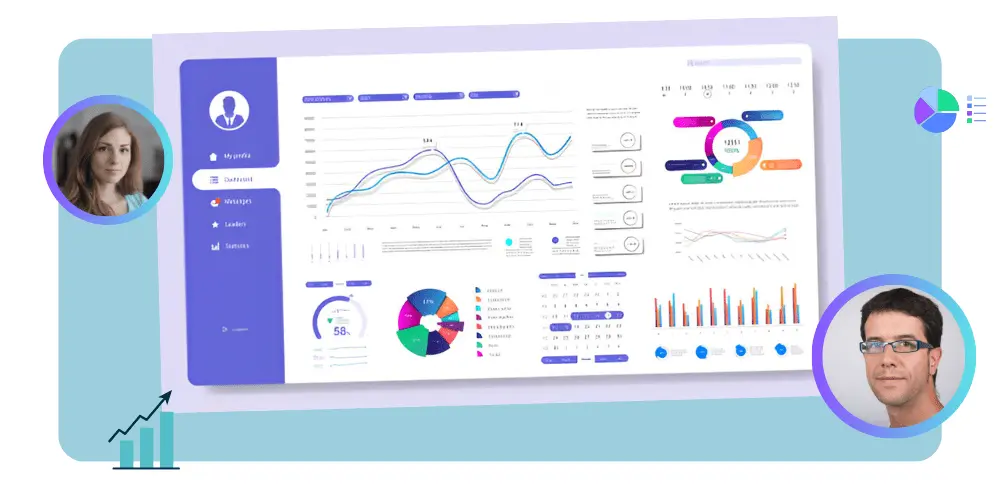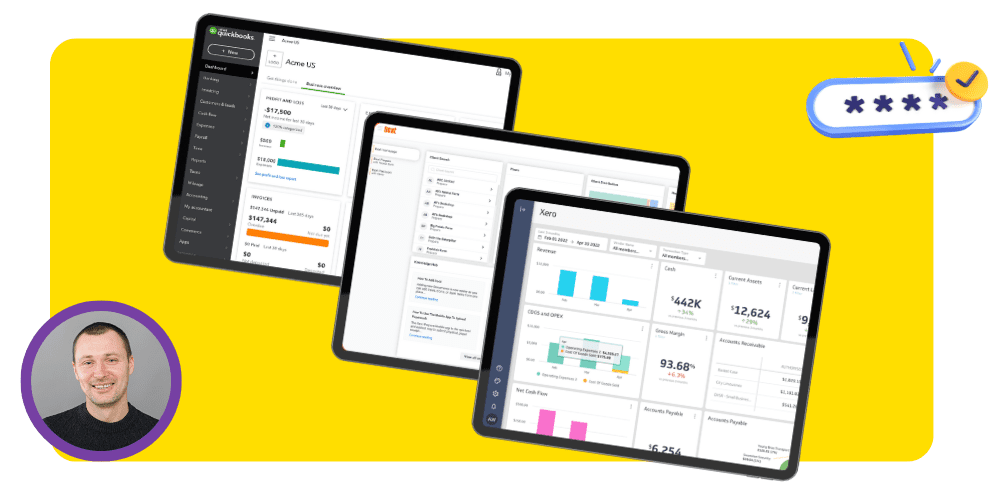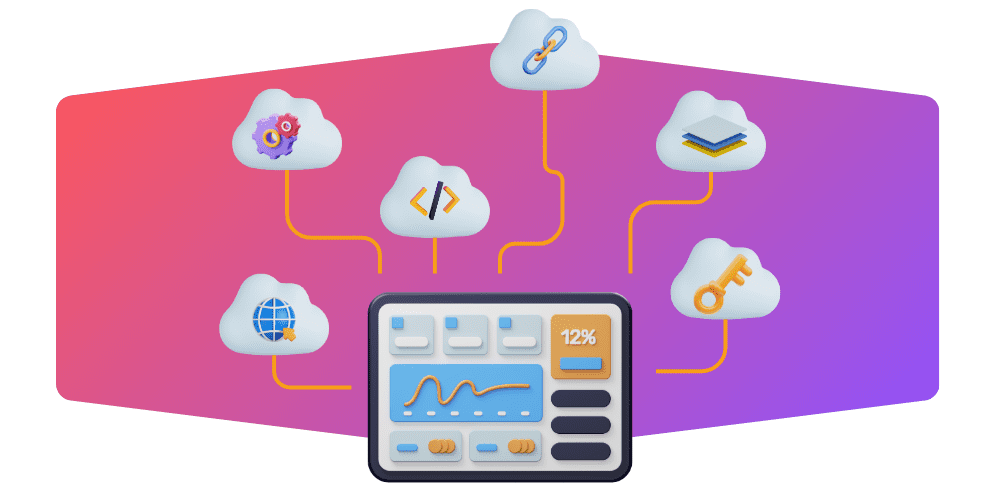Certainly, Business success relies on years of tireless efforts and hard work along with managing the multiple functions of the company efficiently. There are many aspects of the business, such as operations, HR, and marketing. Financial management remains the cornerstone to ensure the continuity of the business, both in the short and long run.
Financial management requires keeping an eagle towards the inflow and outflow of cash, managing critical financial accounts, ensuring that your finances are efficiently allocated and staying on top of your taxes. This article will talk about one of the key financial accounts, which is considered the most critical component for business success, the Profit and Loss Account.
A Profit and Loss Account is necessary to determine the business’s health and is considered essential for tracking and maintaining its profitability. We will be discussing what function the P&L account serves, the importance of managing this account, and many other considerations that entrepreneurs must know.
Bookkeeping is the primary pillar of accounting. Setting up the chart of accounts is the first step to effective bookkeeping. Learn how to set an effective chart of accounts for your business by reading our article for small businesses.
Profit And Loss Account –Things You Need To Know About It
A Profit and Loss Account is a financial report that summarises the company’s expenses, revenues and profits/loss over a particular financial period. A P&L account is also known as an income statement or statement of operations. This account provides a picture of the company’s capability and ability to manage expenses, trigger sales and build profits over time. A financial expert, like an accountant, follows standard accounting principles to prepare this account, including revenue recognition, matching, and accruals.
- To get a complete picture of your company’s finances, it’s also important to understand the balance sheet and how it works.
- The P&L statement is one of three financial statements every public company issues quarterly and annually, along with the balance sheet and the cash flow statement.
- When used together, the P&L statement, balance sheet, and cash flow statement provide an in-depth look at a company’s financial performance together.
- P&L Statements are prepared using the cash method or accrual method of accounting.
Entrepreneurs should consider their P&L account as a book that tells a story about the company’s finances and its profitability during a particular financial period. It showcases whether your current financial policies contribute to the company’s treasure or take more from it.
If maintained accurately over time, a P&L account can reveal significant insights into whether the business generates more income than spending on its running costs. It can help accountants adequately calculate the annual taxes of the company. Furthermore, P&L Accounts can also forecast the expected level of business profits.
However, you must remember that the P&L account will not take any payments from the previous quarter into account. It only takes invoices and receipts of a specific financial period under consideration.
To understand how the Profit and Loss Account ties into overall financial planning and forecasting, the following guides can help
The Importance Of A P&L Account To Different Business Stakeholders
Earning Profit is the main goal of all businesses in both the public and private sectors. Even non-profit organisations must make a surplus for their streamlined operations and survival.
Both Internal and External Stakeholders are interested in one figure on P&L Account, profit. They use a P&L account for analysing their business performance. Also, they utilise the profit data for the future.
Shareholders
Shareholders or business owners are interested in Profit as they have invested money in business and want a fair amount of returns on investment. The Profit depends upon the financial performance of the company.
Higher the Net Profit after paying Tax and Interest, the higher the dividend payment. Based on the sales, revenue and profit of the business after investment, shareholders decide whether to hold or sell the shares in the company. Furthermore, the market value of the firm also depends on it.
The (P&L Account) will show the shareholders how their money is spent to generate Sales Revenue.
Managers
The business managers are interested in the overall success of the company. They use P&L accounts to measure the performance of different parts of the business and analyse its operational efficiency. They are also measuring the competitor’s Profit. The business’s success is calculated by comparing its Profit of last year with the Profit of previous years.
As managers are responsible for taking important decisions regarding product sales and production, they make these crucial decisions based on cost and profit data. The P&L Account shows the data which is further used for the strategic planning of the business.
Employees
The company employees are interested in its P&L Account because of their compensation, as companies that earn higher profits provide good salaries and a high level of job security. Likewise, the companies offer less job security and fewer salaries if their earned Profit is less.
Competitors
Business competitors are interested in each other’s Profit&Loss Accounts to see who is better in business and earning good profits. The P&L account reveals who is the market leader in an economic sector with a Profitable business.
Government
Mainly, Government authorities responsible for the tax collection are interested in the business’s P&L Account to examine whether the right amount of corporate tax is paid or not.
The tax authorities examine the Net Profit Before tax to ensure that the business pays its taxes correctly and on time. The higher the Profit, the more tax the government will receive. The lower the Profit, the less tax the government will receive.
Banks
Banks, Microfinance Institutions and Business Angels are responsible for providing loans to businesses and companies. These entities scrutinise the businesses’ profit and Loss Accounts of the businesses before they give any funds to them. They make sure that:
- The business generates enough profit to pay the interest on the loan
- Businesses can repay the borrowed capital
They measure the business’s success through its profitability, efficiency and liquidity using ratio analysis.
Suppliers
Suppliers investigate P&L Accounts to see how much a business sells and earns Profit every year to estimate the demand for the supplies further. Higher sales and Profits mean that more supplies are needed; similarly, few sales and lower profits result in lower supplies.
Through the P&L accounts, suppliers also estimate whether the company will continue to purchase supplies from them in the long run, as the business might not be able to pay its creditors on time when a business has lower profits.
Potential Investors
Potential investors like investment banks, asset management firms and other private individuals also use Profit and Loss Accounts (P&L accounts) to make investment decisions based on the profitability of a business. They invest their funds in a business if its profitability rate is higher than other businesses.
To assess if an investment is financially worthwhile for them or not, Potential investors conduct the fundamental analysis using Ratio Analysis.
Structure Of A Profit And Loss Account:
A company’s Profit and Loss Account provides a picture of the company’s finances in terms of profits and losses over a given period. The period can be monthly, quarterly, or even an entire financial year. The account consists of the following primary categories:
- Revenues or sales
- Cost of goods sold
- Expenses ( Selling, General and Administrative)
- Marketing and advertising
- Technology
- Interest Expense
- Net income
- Topline
- Bottom line
Example of Profit & Loss Statement
Here is an example quarterly Profit &Loss statement to give you an idea of how it looks in practice. All figures are listed in GBP thousands. We’ve consolidated the expenses into one row to simplify it, but this would usually be split up into expense categories such as insurance, rent, advertising, salaries etc.
| January | February | March | April | |
| Revenue | 100 | 100 | 100 | 100 |
| Returns & refunds | 0.5 | 0.1 | 0.5 | 0.2 |
| Total net revenue | 95 | 99 | 95 | 98 |
| Cost of goods sold | 25 | 75 | 25 | 25 |
| Gross profit | 70 | 23 | 70 | 72 |
| Expenses | 45 | 50 | 43 | 52 |
| Earnings before interest & taxes | 25 | 23 | 27 | 20 |
| Interest expenses | 0.25 | 0.25 | 0.25 | 0.25 |
| Earnings before taxes | 24.75 | 22.75 | 26.75 | 19.75 |
| Income taxes | 0.75 | 0.75 | 0.75 | 0.75 |
| Net earnings | 24 | 22 | 26 | 19 |
How Are the Profit & Loss Statements Calculated?
The P&L statement is calculated by adding up the company’s revenue on one portion and all its expenses on another. The total expenses are subtracted from the total revenue; the result defines a profit or loss.
The balance sheet has a few different calculations that are all performed as representations of one simple formula:
Assets = Liabilities + Owner’s Equity
P&L Statement VS Balance Sheet
Although the P&L statement and balance sheet contain some of the same financial information, including revenues, expenses, and profits, there are clear differences. Here’s the main thing: The balance sheet reports the assets, liabilities and shareholder equity at a specific point in time, while a P&L statement records the company’s revenues, costs, and expenses during a specific period.
Methods For Preparing P&L Statements
Cash method
The cash method or cash accounting method simplifies paying and receiving cash, particularly for small businesses and individuals managing personal finances. This method is specifically used for a business when transactions are made in cash. When cash is received, it is considered as revenue and liabilities if cash is used to pay bills or liabilities.
Accrual Method
The Accrual method considers the revenue as it is earned, whether the payment is made or not. This method records revenue when a product or service is delivered to the customer with the expectation that money will be paid in the future. However, the payment will be received in future. Similarly, liabilities are accounted for even when the company hasn’t for any expenses yet.
Cash Or Accrual Method— Which Is More Feasible?
The main factor that serves as a difference between both methods is the time when revenues and expenses are recorded. The cash method is more of immediate recognition of revenue and expenses, while the accrual method focuses on foreseen revenue and expenses.
Analysis Of Profit And Loss Statement: What To Do?
We advise you to hire an experienced and professional accountant to ensure a quality analysis of your Profit and Loss statements every quarter. However, if you don’t have an accountant on board and wish to analyse the account manually, here are some of the recommendations provided by our financial experts:
- Horizontal Analysis: You must compare year-over-year figures, also known as horizontal analysis, along with industry benchmarking
- Examine Margins: You should closely examine gross profit margin, operating margin or net profit margin.
- Check The Trends: You should discover new or past trends by seeing if your company’s metrics improve or decline.
- Return Rates: Don’t forget to check rates of return like Return on Equity (ROE) or Return on Assets (ROA)
- Valuation Metrics: To further strengthen your analysis, you should also pay attention to different valuation metrics like the Price to Book ratio or the Price to Earnings ratio.
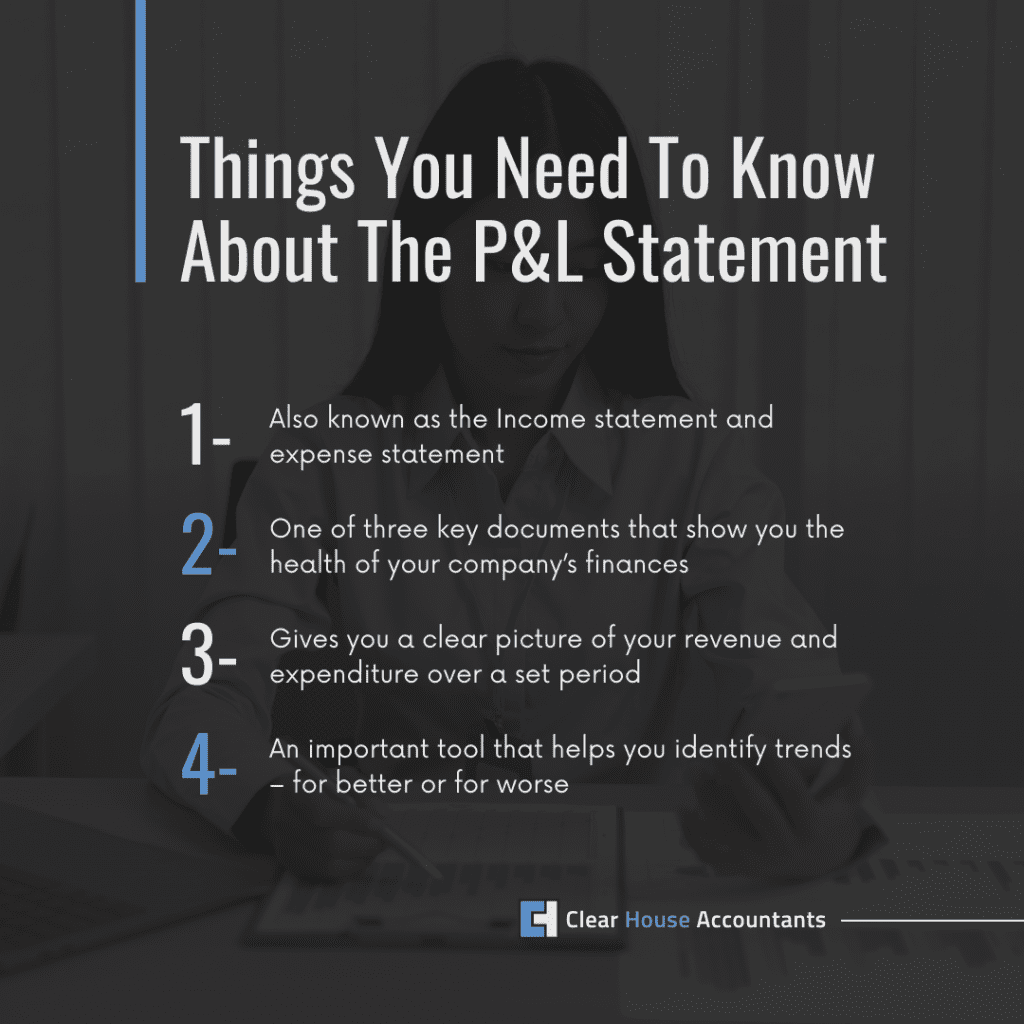
Why Should Businesses Pay More Attention To Their Profit And Loss Accounts?
Progress and profits are the two primary concerns driving business owners to give their best. Business owners want assurance whether they are headed in the right direction or not, and a P&L account can help them understand their position better. It allows entrepreneurs to see whether their business enjoys profits or suffers from losses. It also provides insights into the workings of the business by which accountants can then introduce the required adjustments over time. Even if you outsource your key financial responsibilities, like bookkeeping, to a third party, managers must regularly evaluate the company’s P&L account.
Let’s suppose that you are a fruit vendor and have been in the industry for years. You can compare various profit and loss accounts for each accounting period over an entire financial year to learn more about how much you have spent on advertising for each type of fruit. It can provide a comprehensive understanding of the seasonal pattern for some fruits, as some fruits are more likely to sell in winter than in summer. As a result, you can allocate your advertising budget for a particular fruit depending on its demand during a specific season.
P&L Account And Annual Taxes
When it comes to taxes, a P&L account can be extremely helpful in working out the annual taxes of the company accurately. Moreover, accountants can estimate net profits for the current year using the Profit and Loss Account and estimate expected profits to help understand the effects of changes introduced in the organization.
Limited companies can enjoy unique benefits if they utilize their P&L accounts properly. By using P&L accounts, managers can check whether enough profits will be available after making dividend payments to respective shareholders. When the dividends are paid out, managers can only pay up to the specific level of profits made after deducting corporation tax and other net earnings from the past years.
Setting up a limited company comes with its perks and benefits. Learn how to start your limited company in the UK.
Key Terminologies Associated With The Profit And Loss Account:
The Profit and Loss Account comprises various terminologies that finance managers and business owners must know. Here are some of the essential terminologies:
- Gross Profit: Gross profits are the profits without deducting taxes and are calculated by the following formula- Total income/sales cost of goods sold
- Net Profit: Net profit is the actual income calculated by deducting the profits from the expenses or costs incurred.
- Net Income: Net Income is the final figure obtained by deducting the cost of goods sold, expenses and the resulting taxes.
- Operating Profit: Operating profit can be estimated after subtracting operating expenses from gross profit, such as upfront costs.
What Does A Profit And Loss Account Not Tell?
Though a P&L account can accurately tell about a business’s profitability, it does not reveal any information about accounts payable or accounts receivable.
Accounts payable is the amount a business owes to other businesses, clients or vendors, while accounts receivable is the amount other clients, businesses or suppliers owe you. For instance, it will not indicate whether the company is running out of capital as the spending on inventory increases. For this purpose, a balance sheet can fill the gap.
Did you know that a P&L account does not consider the cash in the bank? The reason being is that money itself is not a profit. The cash in the bank may get affected by the purchase of capital assets like apartments, cars or office equipment. Such investments are non-profit and loss transactions; thus, the cash in the bank is not included in a typical P&L account.
Building and maintaining a Profit and Loss account can be confusing and complicated if you are new to the business world. We advise you to speak to a qualified business accountant or a competitive accounting firm to help you prepare your vital financial accounts accurately.
With the right accountant by your side, you can increase your chances of business success many times. Learn how an accountant can add value to your business.
Clear House Accountants are value-driven Accountants in London, recognised for their top-notch and world-class accounting and financial services. Our accountants have gained extensive training and expertise from professionals in the industry to ensure that their clients become the best in the world. Providing 360 tailored solutions, timely tax updates, filing accurate annual tax returns and identifying valuable tax reliefs are some of the regular accounting services offered by our accountants. Our Accountants also specialise in providing financial coaching to small businesses and startups to help them pass through their business growth stages.
Additional Resources
What Is P&L Management?
Profit and loss management is creating profit and loss statements to analyse your company’s overall revenue and expenses. The P&L statement gives you crucial information about where to reduce expenses, how to generate and increase revenue, and whether your business is generating profit or not.
How Can You Improve Your P&L?
Improving your business’s profits and reducing losses starts with creating P&L statements. Once you’ve done that, you should compare statements from different time periods to understand sales trends, analyse costs, and determine if you can reduce certain expenses while increasing sources of revenue.
Do All Businesses Required To File Profit And Loss Statements With HMRC?
All limited companies must file their statutory accounts with HMRC, including a balance sheet, profit and loss account and a director’s report as part of their year-end financial reporting. This process ensures you’re paying the correct amount of tax. It also helps shareholders and potential investors to get a clear picture of your company’s financial health.




